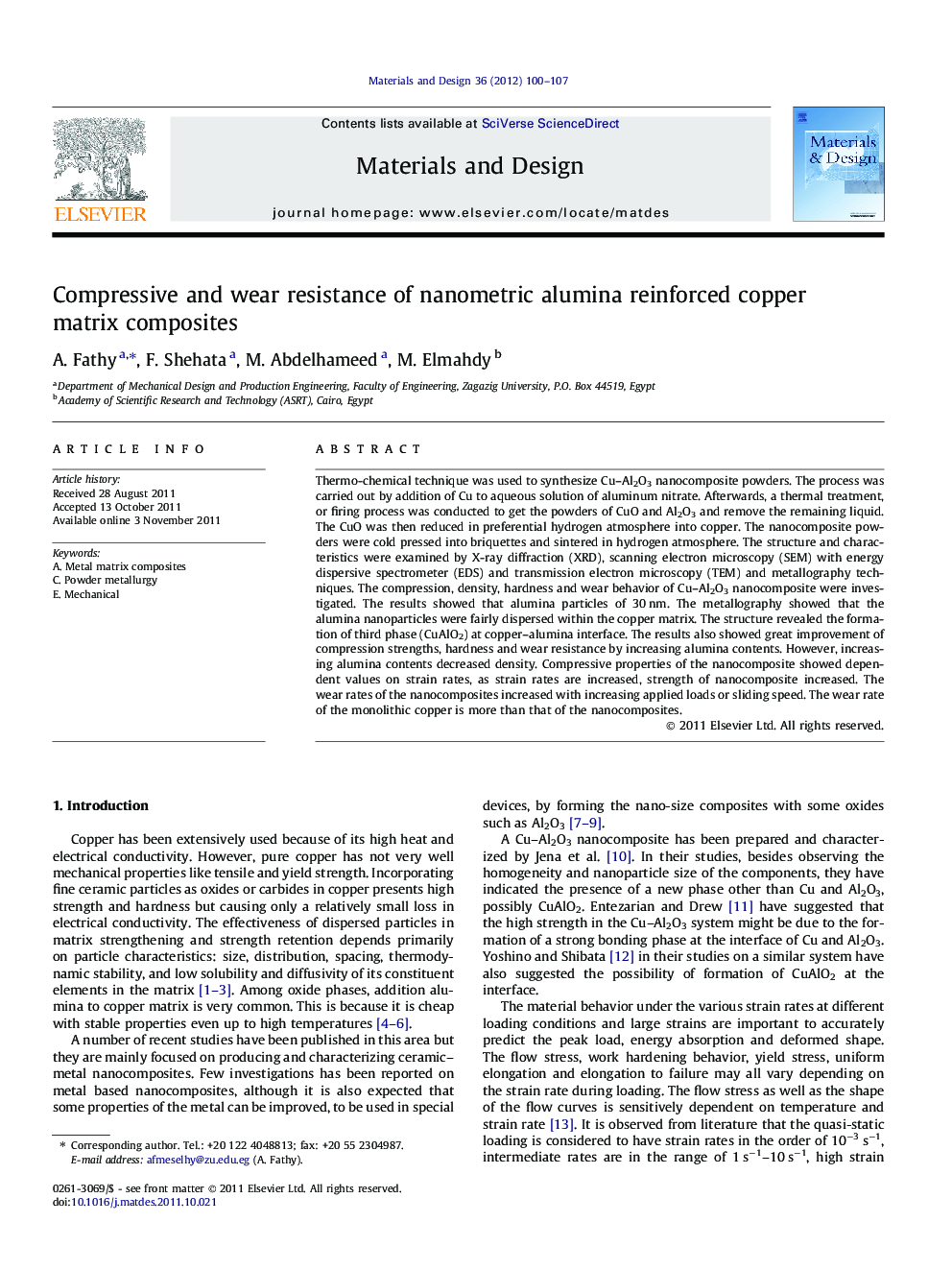| Article ID | Journal | Published Year | Pages | File Type |
|---|---|---|---|---|
| 830819 | Materials & Design (1980-2015) | 2012 | 8 Pages |
Thermo-chemical technique was used to synthesize Cu–Al2O3 nanocomposite powders. The process was carried out by addition of Cu to aqueous solution of aluminum nitrate. Afterwards, a thermal treatment, or firing process was conducted to get the powders of CuO and Al2O3 and remove the remaining liquid. The CuO was then reduced in preferential hydrogen atmosphere into copper. The nanocomposite powders were cold pressed into briquettes and sintered in hydrogen atmosphere. The structure and characteristics were examined by X-ray diffraction (XRD), scanning electron microscopy (SEM) with energy dispersive spectrometer (EDS) and transmission electron microscopy (TEM) and metallography techniques. The compression, density, hardness and wear behavior of Cu–Al2O3 nanocomposite were investigated. The results showed that alumina particles of 30 nm. The metallography showed that the alumina nanoparticles were fairly dispersed within the copper matrix. The structure revealed the formation of third phase (CuAlO2) at copper–alumina interface. The results also showed great improvement of compression strengths, hardness and wear resistance by increasing alumina contents. However, increasing alumina contents decreased density. Compressive properties of the nanocomposite showed dependent values on strain rates, as strain rates are increased, strength of nanocomposite increased. The wear rates of the nanocomposites increased with increasing applied loads or sliding speed. The wear rate of the monolithic copper is more than that of the nanocomposites.
► Thermo-chemical technique was used to synthesize Cu–Al2O3 nanocomposite powders. ► The process was carried out by addition of Cu to aqueous solution of aluminum nitrate. ► The CuO was then reduced in preferential hydrogen atmosphere into copper. ► The nanocomposite powders were cold pressed into briquettes and sintered in hydrogen atmosphere.
